100 years Manx Grand Prix
Newsletter 144 reported the Isle of Man issue of May 23th 2023, to mark 100 years Manx Grand Prix. The issue consists of 8 stamps with images of drivers who participated in the Manx Grand Prix (MGP) in the period 1923-2023. But these drivers are not chosen without reason, they are all included because they illustrate a phase or development in the history of the Manx Grand Prix.
The MGP should not be confused with the TT on Man, held since 1907, as that is a completely different event. However, both are ridden on the same circuit, the Mountain Course with a length of 60.7 km, consisting entirely of public streets and roads.
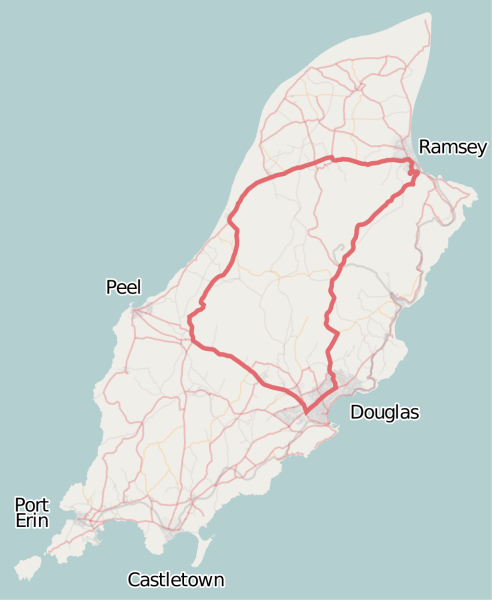
While the Manx TT is a race for experienced professionals, the Manx GP was first organized in 1923 as a race for amateurs and beginners on motorcycles up to 500cc. The name at the time was "Manx Amateur Road Race Championship" (MARRC). That name remained until 1930, when it was changed to "Manx Grand Prix", and multiple racing classes were introduced.
The first Manx GP in 1923 was won by Len Randles with his 500cc side-valve Sunbeam. He thus became the first winner of the Crookall Trophy, the challenge trophy for the winner of the (Senior) Manx GP.
Nice detail: his Sunbeam had leather tool boxes on board, because the reliability of the machine was not very high. In 1924 he won again, with an average lap speed of 100 km/h.
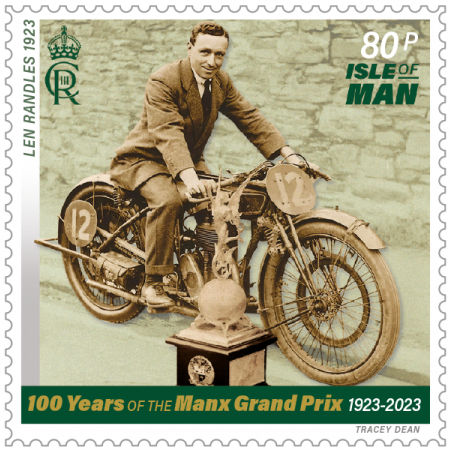
In the 1930s, bikes from British manufacturers dominated the MGP, and average lap speeds increased significantly.
On the stamp we see Albert Moule on his first Norton, the brand with which he participated in many Manx GPs and TTs from 1937 to 1967, and which dominated motorcycle racing in the 1930s and 1940s.
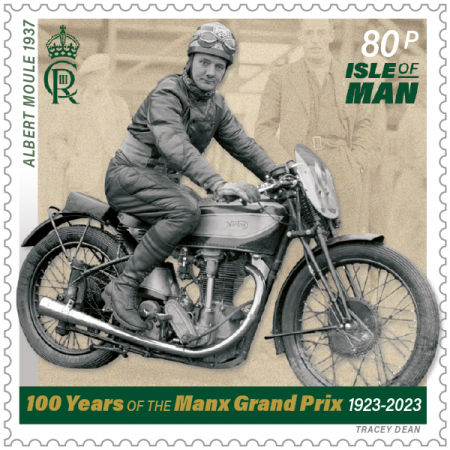
While the use of fairings on racing motorcycles was already common in 1959, this was not permitted at the Manx GP until 1962.
On the stamp we see Ron Langston on his way to second place in the Junior MGP of 1959 on a Norton Manx without fairing, which makes that the classic lines of the motorcycle are clearly visible.
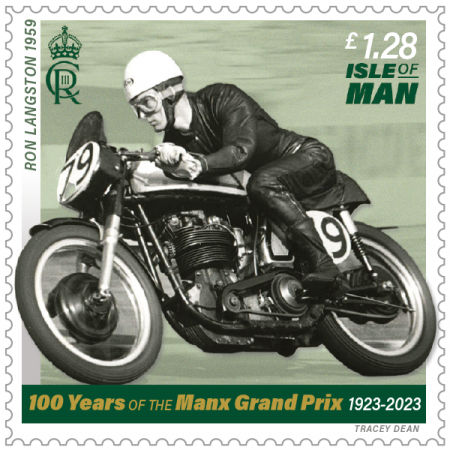
Here we see Chas Mortimer flying over Ballaugh Bridge in 1968, on his 250cc Italian Aermacchi four-stroke. This was one of the last participations with a four-stroke machine, because in the late 1960s all classes faced increasing competition from Japanese two-cylinder two-stroke machines. This was a big change in MGP racing, where four-strokes previously ruled.
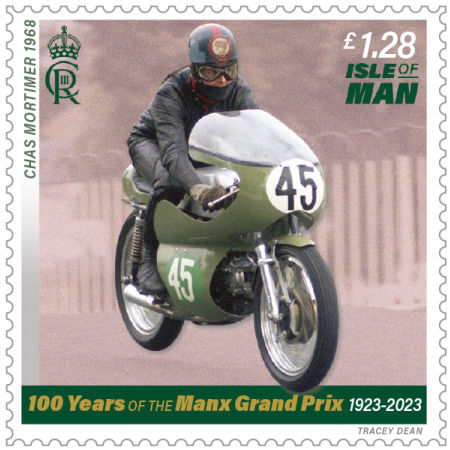
John Knowles was a regular MGP competitor from 1971 to 1982. This image from 1976 shows him joining the two-stroke hordes that ruled the Manx GP in the 1970s with his Yamaha TZ350E.
Racing two-strokes brought very different sights, sounds and smells, as well as higher speeds. In 1979, the lap record for the Senior MGP (for motorcycles up to 500cc) was held by Clive Watts on Suzuki, with an average speed of 170.27 km/h. He won the Senior with a barely lower average race speed of 169.41 km/h.
Remarkably, the same Clive Watts won the Junior MGP (for bikes up to 350cc), also on Suzuki, with an even higher average speed of 171.52 km/h!
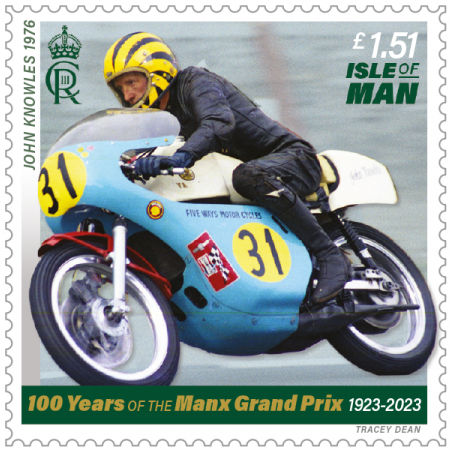
In 1983 the organizers introduced classic motorcycle racing to the Manx GP. Riders such as Bob Heath and Bill Swallow achieved multiple victories, while American Dave Roper led several races but had to settle for second place. Here he leaves Creg-ny-Baa in 1990 on an AJS 7R, better known as "Boy Racer", one of the most successful production racing motorcycles.
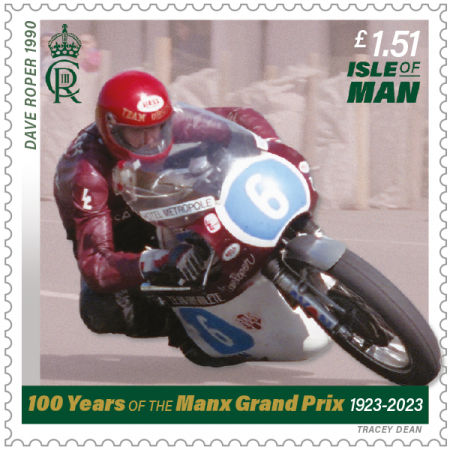
Carolynn Sells became the first woman to win an MGP when she rode to victory in the Ultra-Lightweight race on a 400cc Yamaha FZR in 2009. It was a historic moment in island racing. She later expanded her role at the Manx GP, becoming a volunteer ambassador for the races, then Rider Liaison officer and board member.
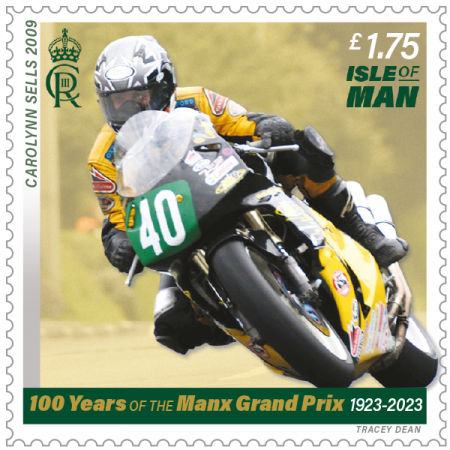
Today's MGP runs over 4 laps, with the bike being refueled after 2 laps. Here, Nathan Harrison is sent back on track after his pit stop in the 2019 MGP, where he achieved a double race win in both the Junior and Senior classes, with average lap speeds in excess of 200 km/h.
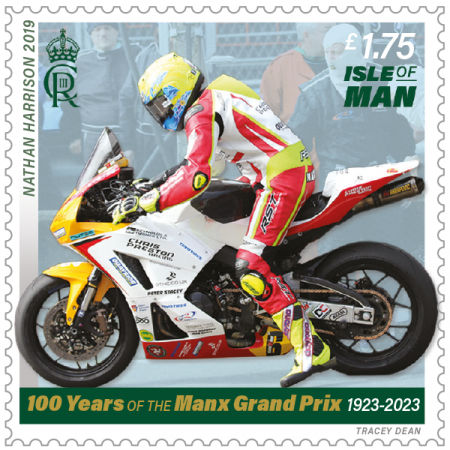
Paul Essens
Top - Back to former page - Home |








